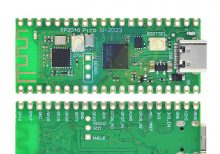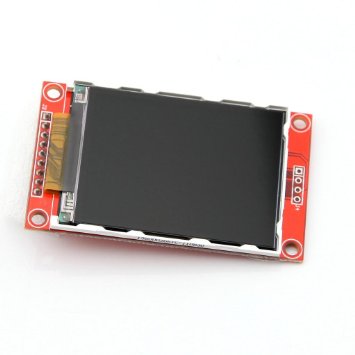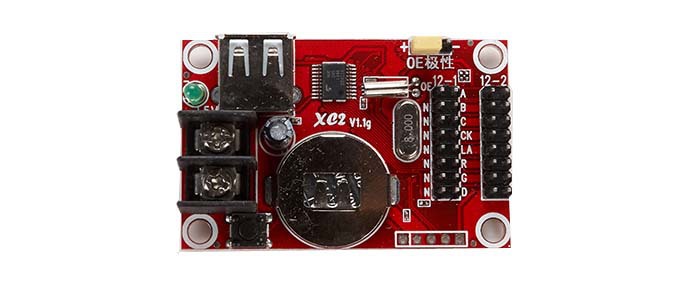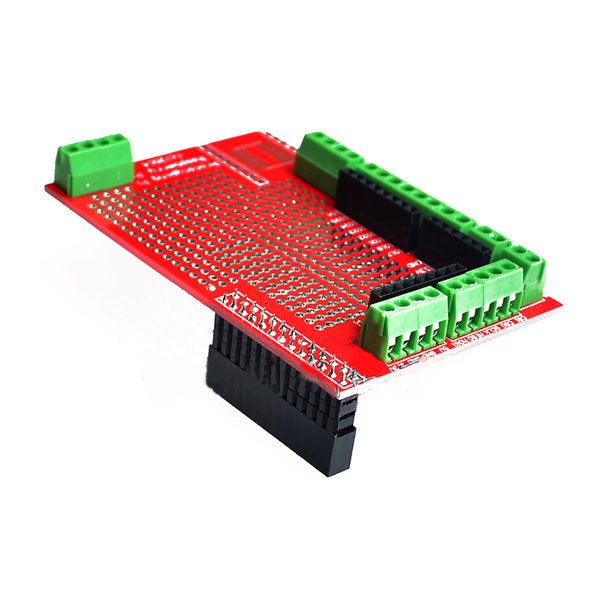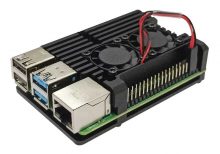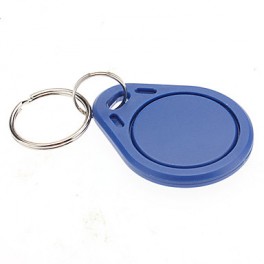|
Description |
|
The Creality CR-6SE is a high-precision 3D printer designed for users seeking reliable, professional-quality prints. Known for its ease of use and innovative features, the CR-6SE offers an enhanced printing experience with a focus on accuracy, stability, and user convenience. Ideal for hobbyists, educators, and professionals, this 3D printer delivers excellent performance for a variety of projects, from prototypes to complex models.
Key Features:
- High Precision Printing: Delivers detailed and accurate prints with a layer resolution of 0.1 mm.
- Auto-Leveling System: Features an advanced leveling-free system for hassle-free setup.
- Silent Operation: Equipped with a silent motherboard and TMC2209 drivers for quiet printing.
- Sturdy Construction: Built with a robust aluminum frame for stability and durability.
- Modular Design: Easy to assemble and maintain with a modular design.
- Resume Printing Function: Capable of resuming printing after power outages or interruptions.
- Touch Screen Interface: 4.3-inch color touch screen for an intuitive user interface.
- Dual Z-Axis: Provides improved accuracy and stability for the Z-axis movement.
Technical Specifications:
- Build Volume: 235 x 235 x 250 mm
- Layer Resolution: 0.1 mm
- Printing Speed: Up to 100 mm/s
- Nozzle Diameter: Standard 0.4 mm (interchangeable)
- Filament Compatibility: PLA, ABS, TPU, PETG, and other 1.75 mm filaments
- Extruder Type: Single Bowden extruder
- Print Bed: Carborundum glass platform for better adhesion and easy removal of prints
- Connectivity: USB, SD card
- Operating Temperature: Nozzle: Up to 260°C, Bed: Up to 110°C
- Power Supply: Meanwell 24V 350W
Applications:
- Prototyping: Ideal for creating accurate and detailed prototypes.
- Education: Useful for educational purposes in schools and universities.
- Art and Design: Perfect for artists and designers creating intricate models.
- DIY Projects: Suitable for hobbyists and makers working on custom projects.
- Manufacturing: Can be used for small-scale manufacturing and production of parts.
Usage:
- Assembly: Follow the provided instructions to assemble the 3D printer.
- Leveling: Use the auto-leveling system to ensure the print bed is properly leveled.
- Loading Filament: Load the desired filament into the extruder.
- Printing: Upload the 3D model via USB or SD card and start the print job using the touch screen interface.
- Post-Processing: Remove the finished print from the bed and perform any necessary post-processing.
Caution:
- Safety: Always operate the printer in a well-ventilated area.
- Temperature: Handle heated components with care to avoid burns.
- Maintenance: Regularly clean and maintain the printer for optimal performance.
Datasheet:
For detailed technical specifications, refer to the Creality CR-6SE Datasheet.
|
The 2.2-inch colored LCD is a compact display module designed to provide clear and vibrant visual output in a small form factor. This LCD module is ideal for various embedded applications where space is limited but a color display is required. It is commonly used in consumer electronics, handheld devices, and development projects.
Key Features:
- 2.2-inch TFT LCD display
- High-resolution color display for clear and vibrant visuals
- Wide viewing angle for better visibility from different perspectives
- Supports multiple color formats (RGB)
- Easy integration with microcontrollers and development boards
- Low power consumption for efficient operation
- Durable and compact design
Technical Specifications:
- Display Type: TFT LCD
- Screen Size: 2.2 inches
- Resolution: 240 x 320 pixels
- Color Depth: 65K colors (16-bit RGB)
- Interface: SPI, parallel (depends on model)
- Operating Voltage: 3.3V to 5V
- Backlight: LED
- Viewing Angle: 160° horizontal/vertical (varies by model)
- Dimensions: Varies by manufacturer (common size: 50mm x 60mm x 6mm)
- Weight: Varies by manufacturer (typically around 25g)
Applications:
- Portable electronic devices
- Handheld gadgets and consumer electronics
- Industrial control displays
- Educational projects and prototyping
- Home automation systems
Usage:
- Connect the LCD module to your microcontroller or development board using the appropriate interface (SPI, parallel).
- Power the module with a compatible power source (3.3V to 5V).
- Install and configure the necessary display libraries and drivers for your development environment.
- Use the provided functions to initialize the display and send data for visualization.
- Customize the display output according to your project requirements.
Caution:
- Handle the LCD module with care to avoid damage to the screen or connectors.
- Ensure correct wiring and voltage levels to prevent electrical damage.
- Follow the manufacturer’s guidelines for installation and operation to avoid damage and ensure proper functionality.
Datasheet:
For detailed technical specifications, refer to the 2.2-Inch Colored LCD Datasheet.
|
The XC2 is a versatile and high-performance integrated circuit (IC) designed for specific applications in electronic systems. While the specific functionality and details can vary depending on the exact model and manufacturer, the XC2 series typically includes features such as advanced processing capabilities, flexible I/O options, and support for a range of communication protocols. This series is used in various applications requiring efficient data handling, control, and signal processing.
Key Features:
- High-speed processing capabilities
- Flexible I/O options
- Support for multiple communication protocols
- Low power consumption
- Reliable performance in demanding environments
- Available in various package types
Technical Specifications:
- Package Type: Varies by model (e.g., TQFP, BGA)
- Operating Voltage: Typically 3.3V or 5V (depends on specific model)
- Clock Speed: Varies by model
- Memory: Varies by model (e.g., Flash, SRAM)
- I/O Pins: Varies by model
- Communication Interfaces: UART, SPI, I2C, etc. (depends on specific model)
- Operating Temperature Range: Varies by model
Applications:
- Embedded systems
- Industrial automation
- Consumer electronics
- Communication devices
- Automotive control systems
- Medical devices
Usage:
- Program the XC2 IC using the appropriate programming tools and software.
- Connect external peripherals and components to the IC’s I/O pins as required by your application.
- Configure the IC’s settings and features through software or hardware interfaces.
- Integrate the IC into your circuit and ensure proper functionality through testing.
Caution:
- Check the specific datasheet for detailed specifications and handling instructions for the XC2 model you are using.
- Ensure compatibility with your circuit’s voltage and current requirements.
- Handle with care to avoid damage from electrostatic discharge (ESD).
|
The Atmega 328P-PU is a high-performance, low-power 8-bit AVR microcontroller from Microchip Technology, commonly used in Arduino boards like the Arduino Uno. It features advanced RISC architecture with 32KB of ISP flash memory, 2KB of SRAM, and 1KB of EEPROM. This microcontroller is suitable for a wide range of applications, including embedded systems, consumer electronics, and DIY electronics projects.
Key Features:
- Advanced RISC architecture
- 32KB of in-system self-programmable flash memory
- 2KB SRAM and 1KB EEPROM
- 23 general-purpose I/O lines
- 32 general-purpose working registers
- Three flexible timer/counters with compare modes
- Internal and external interrupts
- Serial programmable USART
- Master/slave SPI serial interface
- On-chip analog comparator
- 10-bit ADC with 6 multiplexed channels
- Operating voltage range of 1.8V to 5.5V
- Low power consumption in active and sleep modes
Technical Specifications:
- Architecture: 8-bit AVR
- Flash Memory: 32KB
- SRAM: 2KB
- EEPROM: 1KB
- Clock Speed: Up to 20 MHz (with external crystal)
- Operating Voltage: 1.8V to 5.5V
- Digital I/O Pins: 23
- PWM Channels: 6
- Analog Input Channels: 6
- ADC Resolution: 10-bit
- Timers: 1 x 16-bit, 2 x 8-bit
- Communication Interfaces: USART, SPI, I2C
- Package Type: PDIP-28 (Plastic Dual In-line Package)
- Operating Temperature Range: -40°C to +85°C
Applications:
- Arduino development boards
- Consumer electronics
- Embedded systems
- Robotics
- Home automation
- DIY electronics projects
- Industrial automation
Usage:
- Programming:
- Use an AVR programmer or Arduino board to program the Atmega 328P-PU.
- Commonly programmed using the Arduino IDE for ease of use.
- Connect the microcontroller to your development environment using the appropriate hardware and software tools.
- Circuit Design:
- Integrate the Atmega 328P-PU into your circuit with necessary external components like crystal oscillators, capacitors, and resistors.
- Ensure proper power supply and grounding for stable operation.
- Interfacing:
- Utilize the I/O pins for interfacing with sensors, actuators, displays, and other peripherals.
- Use communication interfaces like USART, SPI, and I2C for data exchange with other devices.
Caution:
- Handle the microcontroller with care to avoid damage from electrostatic discharge (ESD).
- Ensure proper power supply voltage and connections to prevent damage.
- Follow the manufacturer’s guidelines for programming and operation.
Datasheet:
For detailed technical specifications, refer to the Atmega 328P Datasheet.
|
The Raspberry Pi Prototype Expansion Board is designed to provide a flexible and customizable interface for prototyping and developing projects with a Raspberry Pi. It offers additional GPIO pins, power distribution, and mounting options, making it ideal for creating custom electronic circuits and experiments.
Key Features:
- Compatible with various Raspberry Pi models (e.g., Raspberry Pi 3, 4, and Zero)
- Breadboard-compatible layout for easy prototyping
- Additional GPIO pin headers for extended connectivity
- Power distribution rails for easy power supply connections
- Mounting holes for secure attachment to enclosures or project boxes
- Access to Raspberry Pi’s I2C, SPI, and UART interfaces
- Option to connect external sensors, actuators, and other peripherals
Technical Specifications:
- Compatibility: Raspberry Pi 3, 4, Zero (check specific model compatibility)
- GPIO Headers: 40-pin (standard Raspberry Pi GPIO header)
- Breadboard Area: Yes (varies by model; typically a 400-point breadboard)
- Power Rails: Yes (typically 3.3V and 5V rails)
- Mounting Holes: 4 or more, positioned to fit standard enclosures
- Interface Access: I2C, SPI, UART (depends on board design)
- Dimensions: Varies by manufacturer (common sizes: 85mm x 56mm x 15mm)
- Weight: Varies by manufacturer (typically 50g to 100g)
Applications:
- Prototyping and testing electronic circuits
- Educational projects and experiments
- Development of custom Raspberry Pi-based devices
- Integration with sensors, displays, and other peripherals
- Rapid development and iteration of electronics projects
Usage:
- Connect the expansion board to the Raspberry Pi’s GPIO header.
- Use the breadboard area to build and test circuits.
- Connect additional peripherals and sensors as needed.
- Secure the board in an enclosure using the mounting holes if desired.
Caution:
- Ensure correct connections to avoid damage to the Raspberry Pi or connected components.
- Follow the Raspberry Pi and expansion board manufacturer’s guidelines for setup and usage.
- Handle with care to prevent physical damage and ensure proper electrical connections.
Datasheet:
For detailed technical specifications, refer to the Raspberry Pi Prototype Expansion.
|
This sleek aluminum case for Raspberry Pi 4 offers superior protection and cooling with its ultra-thin design and dual cooling fans. Constructed from reinforced aluminum, the case ensures effective heat dissipation while maintaining a lightweight and durable build. The open design provides unobstructed access to all ports and does not interfere with the Wi-Fi signal.
Key Features:
- Ultra-thin Design: Slim profile for minimal space usage
- Easy Installation: Simple to assemble with included hardware
- Fast Heat Dissipation: Designed with smooth and straight aluminum material for efficient cooling
- Port Access: All ports and slots perfectly align with Raspberry Pi 4 Computer Model B
- Open Case Design: No interference with Wi-Fi signals
- Reinforced Material: Lightweight, durable aluminum with optional CPU grease for enhanced heat dissipation
- Silicon Cooling Pad: 0.5mm thickness for direct contact with the shell body, replaceable with CPU grease for better cooling
Dual Fan Features:
- Noise Level: 18dB for quiet operation
- Power Consumption: Low power design for energy efficiency
- Cooling Performance: Dual fans for enhanced heat dissipation
- Quiet Operation: Designed to minimize fan noise
- Quality Control: Each fan tested for optimal performance
- Thermal Tape: Updated for effective heat conduction
Technical Specifications:
- Material: Reinforced aluminum
- Cooling Fans: Dual 5V DC fans
- Fan Dimensions: 30mm x 30mm x 7mm
- Fan Noise Level: 18dB
- Case Dimensions: 95 x 62 x 30 mm (L x W x H)
- Weight: 150g (approx.)
- Cooling Pad Thickness: 0.5mm
- Port Compatibility: Fully compatible with Raspberry Pi 4 Model B
Applications:
- Raspberry Pi 4 Model B
- High-performance computing projects
- Media centers and home automation systems
- Robotics and DIY electronics
Usage:
- Install the Raspberry Pi 4 into the case using the provided screws and standoffs.
- Connect the dual cooling fans to the GPIO pins on the Raspberry Pi 4.
- Ensure the cooling pad or CPU grease is applied correctly for optimal heat dissipation.
Caution:
- Raspberry Pi is not included.
- Avoid exposure to excessive moisture or dust.
- Ensure fans are connected properly to avoid overheating.
|
The 125KHZ RFID Key Chain is a compact and durable radio-frequency identification (RFID) device used for access control and identification applications. It operates at a frequency of 125kHz and is compatible with standard RFID readers. The key chain format makes it convenient to carry and use for various applications such as security systems, attendance tracking, and asset management.
Key Features:
- Operates at 125kHz frequency
- Durable and compact key chain design
- Compatible with standard RFID readers
- Unique identification number (UID) for each key chain
- Waterproof and shock-resistant
- Long read range (up to 10 cm depending on the reader)
- No battery required (passive RFID technology)
Technical Specifications:
- Operating Frequency: 125kHz
- Material: ABS plastic
- Dimensions: Approximately 40mm x 32mm x 4mm
- Weight: Approximately 6g
- Read Range: Up to 10 cm (depending on the reader and environment)
- Data Storage: 64-bit read-only unique identifier (UID)
- Operating Temperature Range: -25°C to +85°C
- Color: Typically blue, but may vary by manufacturer
- Waterproof: Yes
Applications:
- Access control systems
- Time and attendance tracking
- Membership management
- Asset tracking
- Secure entry systems
- Contactless payment systems
Usage:
- Integration:
- Enroll the RFID key chain in the desired RFID system by registering its unique identifier (UID) with the system’s database.
- Operation:
- Present the key chain to an RFID reader within the read range (up to 10 cm).
- The reader will capture the UID and communicate it to the control system for processing.
- Security:
- Use the key chain for secure access to restricted areas or for tracking attendance.
- Pair the key chain with a compatible RFID reader and control system for seamless operation.
Caution:
- Avoid exposing the key chain to extreme temperatures or harsh chemicals.
- Do not bend or apply excessive force to the key chain to prevent damage.
- Keep the key chain away from strong magnetic fields to ensure proper operation.
Datasheet:
For detailed technical specifications, refer to the manufacturer’s datasheet for your specific 125kHz RFID key chain model.
|
